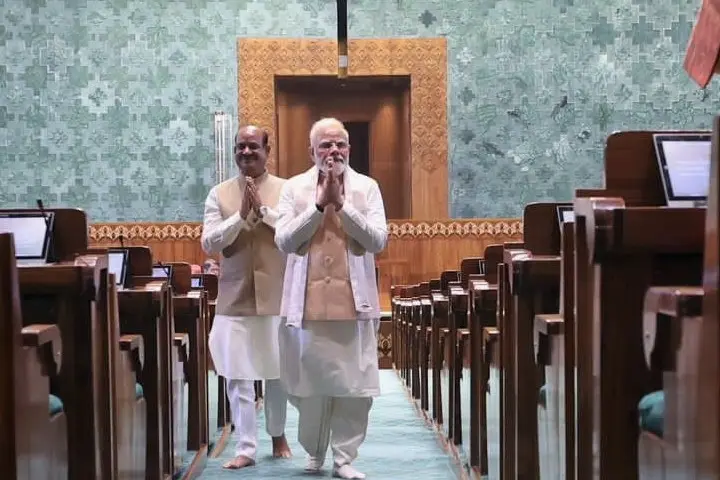As Prime Minister Narendra Modi installed the historic “Sengol” adjacent to the Lok Sabha Speaker’s seat, while inaugurating the new Parliament House today, it marked a new beginning for India. Modi, who inaugurated the new Parliament building, tweeted, “The new Parliament House is a reflection of the aspirations of new India.”
“As the new building of India’s Parliament is inaugurated, our hearts and minds are filled with pride, hope and promise. May this iconic building be a cradle of empowerment, igniting dreams and nurturing them into reality. May it propel our great nation to new heights of progress,” he further said, as #MyParliamentMyPride was trending.
The Sengol, handed over to India’s first Prime Minister Jawaharlal Nehru, marks the transfer of power.
“Let us embrace this symbol from the past to affirm the values of our present,” the Congress MP Shashi Tharoor said, even as his party boycotted the grand inauguration.
The construction of the new Parliament house, which cost about Rs 1200 crore, began in 2022. According to Bimal Patel, the chief architect of the sprawling building, the triangular shape represents the sacred geometry in different religions.
However, unsurprisingly, the Opposition parties launched a scathing attack on Modi and his party. As many as 19 Opposition parties including the Congress, Aam Aadmi Party that boycotted the grand inauguration of the new building in a joint statement said, “When the soul of democracy has been sucked out Parliament, we find no value in a new building. We announce our collective decision to boycott the inauguration of the new Parliament building.”
Does India need a new Parliament building?
The simple answer is yes. Amid a raging debate on the need of the new Parliament building and the boycott by the Opposition parties to attend its inauguration today, it is critical to understand that the old venue designed in the pre-independence era would not be able to provide space to the members once the delimitation drive is underway in 2026. The old building, which also has been overused and is now in distress, has space for only 552 members. But in 2026, more members will come in once the delimitation exercise kicks in.
Now the Lok Sabha in the new building will be able to accommodate 888 members. The Rajya Sabha will have 384 seats.
Delimitation essentially means redistributing and rejigging the number of state Assembly seats with the aim to adequately represent the population change in the states. Typically, delimitation is an exercise undertaken after a gap of a few years, typically after every census, for better representation. The exercise was last carried out after the 1971 census.
According to the Constitution (84th Amendment) Act, 2002, there is a freeze on readjustment of constituencies till the first Census after 2026, The Print noted. As 2026 approaches, new members will be added to the Parliament house.
The new Parliament House therefore is a symbol of a new India, set to rechart its journey on the global stage.
Also read: PM Modi inaugurates new Parliament building, symbol of New India




















